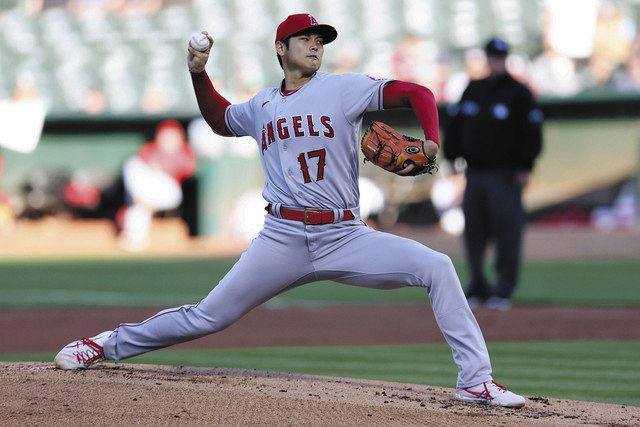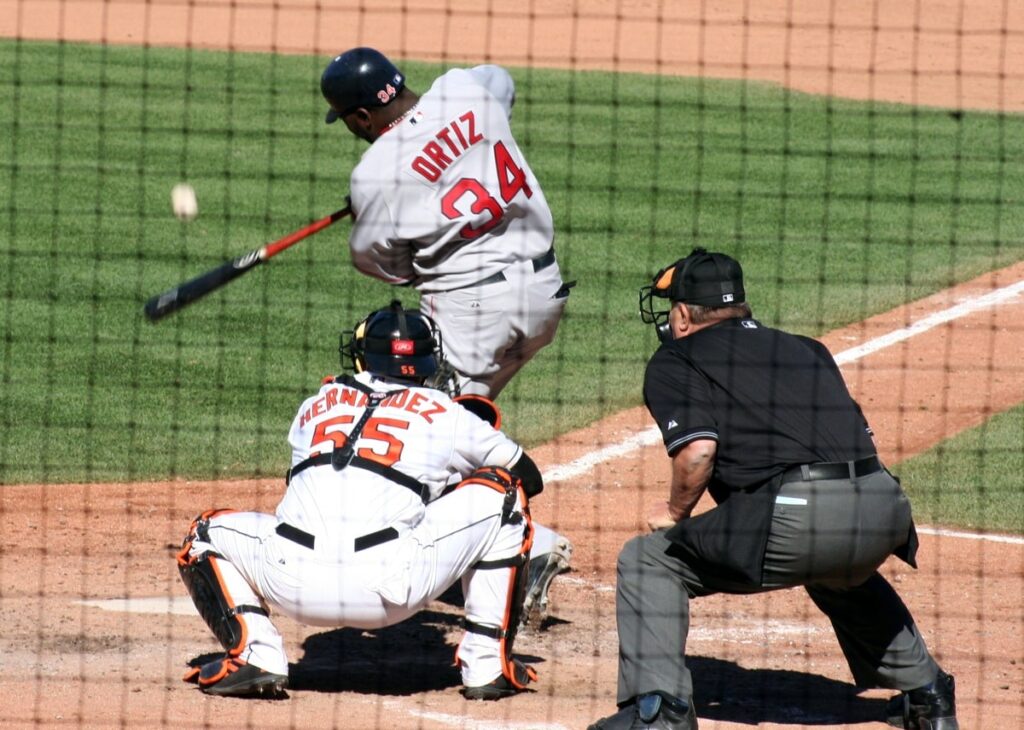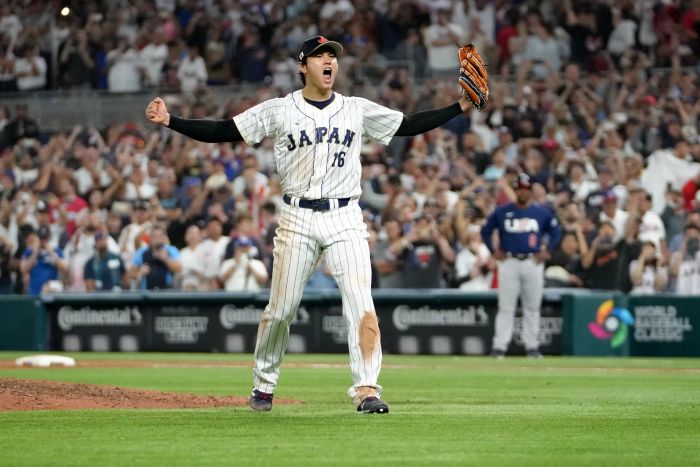![What is a hold point in baseball? [Comprehensive explanation]](https://planotatico.com/wp-content/uploads/2024/05/x7FsEohhygDF67yGDeyvJuSqDG0xdn42Sel6oUvu-min.jpeg)
Hold points are widely recognized as an indicator for evaluating the important role of relief pitchers, but little is known about their definition and how they are calculated.
This article provides a comprehensive explanation of hold points, from the basics to how to calculate them, how they differ from saves, and the latest trends.
So let’s take a quick look.
目次
What are the basics of hold points?
Hold Point Definition
Hold points (HP) is an important indicator used to evaluate relief pitchers in baseball.
Specifically, it refers to the total number of holds and rescue wins.
A hold is recorded when a relief pitcher leaves the game without closing out the game while his team still has a lead.
Hold points are the sum of holds, relief wins, and the number of relief victories that are awarded when a relief pitcher leaves the mound while his team is ahead and holding the lead.
In this way, hold points are an indicator for comprehensively evaluating a relief pitcher’s contribution.
As you can see from the definition of hold points, the role of a relief pitcher is to change the flow of the game.
The condition for a hold is to leave the game while maintaining the team’s lead, and hold points are awarded based on contributions to victory in addition to that.
History of Hold Points
The concept of hold points was first developed in the United States in 1986.
At the time, saves were widely used as an evaluation indicator for relief pitchers (closers), but there were not enough indicators to evaluate the contribution of relief pitchers (setup men).
To complement this, a record called a hold was introduced.
Later, in the 2000s, hold points were also adopted in Nippon Professional Baseball (NPB).
Especially since 2005, hold points have been used as an important indicator when selecting the best relief pitcher, and have had a major impact on the evaluation of relief pitchers.
By quantifying a relief pitcher’s value, hold points have also come to play an important role in determining a player’s market value and contract negotiations.
This has led to major changes in the way relief pitchers are used and the strategies they employ, with hold points now playing an important role in baseball tactics.
For example, a relief pitcher with high hold points is more likely to be used in situations that directly affect the team’s victory, and as a result, this is often reflected in his signing on bonus and annual salary.
For fans, hold points are also an important indicator for understanding the contribution of relief pitchers, making watching the game more enjoyable.

How to calculate hold points
Hold points are a very important metric when evaluating a relief pitcher.
This section provides more information on how hold points are calculated.
Hold point formula and calculation example
Calculating hold points is very simple; just add up the number of holds and rescue wins.
This metric is used to evaluate how much a relief pitcher contributes to the game and is calculated by combining the number of times he successfully protected his team’s lead (holds) and the number of times he earned a win while pitching in relief (relief wins).
Hold Point Formula:
Hold points (HP) = number of holds (H) + number of rescue victories (W)
For example, if a pitcher has 20 holds in a season, including 5 relief wins, his hold points would be:
Hold points (HP) = 20 (H) + 5 (W) = 25
This calculation method allows for a more comprehensive evaluation of a relief pitcher’s contribution. It takes into account not only holds but also relief wins, which actually have a direct impact on the outcome of a game, making it an index that more accurately reflects a pitcher’s value.
Why are hold points important?
The reason hold points are important is because of the role and influence of the relief pitcher.
Relief pitchers are tasked with taking the mound at key moments in the game and protecting their team’s lead.
Therefore, achievements such as holds and relief wins are often directly linked to a team’s victory or defeat, and hold points, which evaluate these comprehensively, are an extremely important indicator.
Increased strategic value
Hold points are also useful for evaluating the strategic use of relief pitchers.
For example, a pitcher who often takes to the mound late in a game when the team is leading by a small margin is considered to have a high ability to perform well under that pressure.
As a result, pitchers with high hold points tend to be trusted by managers and coaches and are more likely to be used in important situations.
Impact on contract negotiations
Hold points also have a significant impact on a player’s market value and contract negotiations.
Because hold points are used as an evaluation indicator for relief pitchers, they are often reflected in players’ annual salaries and contract terms.
In particular, pitchers with high hold points are increasingly being recognized for their contributions and signing high-paying contracts.
Fans’ Perspective
For fans, hold points are also an important indicator for understanding a relief pitcher’s performance.
Tracking the performance of relief pitchers who can change the flow of the game through numerical data will increase the excitement of the game and make watching the game even more enjoyable.
Also, understanding the contribution of each player through hold points will make cheering even more enjoyable.

The difference between a hold point and a save
Both hold points and saves are indicators used to evaluate the performance of a relief pitcher, but there are clear differences in their meaning, calculation method, and role.
Here we will explain in detail the difference between hold points and saves.
Differences in role from save
A save is primarily an indicator used to evaluate a closer’s ability to protect a lead in the final stages of a game.
Certain conditions must be met for a save to be recorded.
Common conditions include pitching the final inning with a lead of three runs or less, or pitching three or more innings with the score tied or with a lead.
On the other hand, hold points are an indicator used to evaluate the contribution of relief pitchers.
A hold is recorded when a relief pitcher comes on to the mound and leaves the game with the lead intact, and a relief win is recorded if the team wins while the pitcher is on the mound.
The sum of these two elements is your hold point.
In this way, a save is an evaluation of the player’s ability to finish off a game, while a hold point is an indicator that evaluates the player’s contribution at key moments in the game, and the two have different roles.
How to use them and strategies
Knowing how to use saves and hold points is extremely important to a team’s strategy.
Since a save requires protecting a lead in the final stages of a game, closers often pitch in very pressured situations.
Closers are expected to pitch consistently, and their ability to hold on to leads ensures the team’s victory.
Hold points, on the other hand, require you to defend a lead at key moments in the middle to late stages of a match.
Relief pitchers are often used to change the flow of a game, and their role is particularly important when maintaining a small lead.
The decision to use relief pitchers depends on the flow of the game and the state of the opposing batting line-up, so it is heavily influenced by the tactics of the manager and coaches.
For example, when a team needs to protect a lead late in a game, managers often use relief pitchers with high hold points.
This allows the closer to feel comfortable taking on the final innings if the team can hold on to a lead at a crucial moment in the game.
Hold points also affect a player’s market value and contract negotiations.
Players with high hold points are more likely to be recognized for their contributions and sign high-value contracts.
This is an important factor for both the team and the players.
Increased strategic value
Effective use of both hold points and saves increases the strategic value of your team.
For example, having a strong relief pitcher staff can help you protect your lead in the middle and late stages of a game, and then hand the baton over to your closer to ensure victory.
As such, it is important to use hold points and saves strategically according to their respective roles.
By understanding the role of relief pitchers and using them appropriately, you can increase your team’s winning percentage.

Effect of Hold Points
Hold points are an important metric in evaluating relief pitchers, and their impact extends to team strategies, player evaluations, and contracts.
This section goes into more detail about how hold points affect you.
Impact on team strategy
Hold points have a big impact on team strategy. The role of the relief pitcher is to change the flow of the game and protect the lead.
Pitchers with high hold points are considered more reliable in key game situations and are more likely to be used by managers and coaches.
For example, when a team needs to maintain a small lead late in a game, a pitcher with a high hold point rating is often used.
This allows you to turn the tide of the game in your favor, and ultimately handing the baton over to the closer ensures victory.
Also, having multiple pitchers with hold points allows a team to build a stable relief corps for the middle to late innings of games.
This allows the flow of the game to be maintained even if the starting pitcher leaves the game early, giving the team tactics more flexibility.
Additionally, hold points also influence tactical decisions during a match.
For example, if the opposing team has a strong batting line-up, bringing in a pitcher with high hold points will allow you to protect your lead and move on to the next phase.
This will give you an advantage in the game and increase your team’s chances of winning.
Player ratings and their impact on contracts
Hold points also have a significant impact on player evaluations and contract negotiations.
Using hold points as a metric to evaluate a relief pitcher’s contribution increases the player’s market value.
In particular, pitchers with high hold points are often highly regarded by other teams because their performance is directly linked to their team’s victory.
Players with high hold points also have a stronger position in contract negotiations.
Players with high hold points are more likely to be recognized for their contributions and sign high-paying contracts.
This directly impacts a player’s annual salary and contract terms, and is an important factor in a player’s career.
For example, players who have consistently high hold points throughout the season often attract attention in the free agent market.
For the team, acquiring such players will allow them to strengthen their relief pitching corps.
For the players themselves, receiving high evaluations will enable them to sign better contract terms, leading to career advancement.
Hold points are also an important indicator in evaluating a player’s performance.
Managers and coaches often use hold points as a reference when deciding how to use players, so it is also an important indicator for players.

Top Hold Points Players
Hold points are an important indicator for evaluating a relief pitcher’s performance.
Here we take a closer look at the past hold point leaders and current top relief pitchers.
Past Hold Point Leaders
All past hold point leaders have gone on to become the greatest relief pitchers of their era.
These players have held the team’s lead in many games and are highly regarded for their contributions.
For example, Mariano Rivera is one of the most famous relief pitchers in Major League Baseball (MLB).
He was the longtime New York Yankees closer and holds the all-time record for most saves, but he also recorded the most hold points along the way.
Rivera’s dominant performance played a key role in boosting the holding points.
In Nippon Professional Baseball (NPB), Tetsuya Yamaguchi is known as the all-time leader in hold points.
As a player for the Yomiuri Giants, he demonstrated consistent performance, recording more than 50 holds every season from 2008 to 2014.
Yamaguchi’s solid pitching contributed greatly to the team’s victory.
Additionally, other notable relief pitchers include Jose Mesa and Trevor Hoffman.
These players also recorded numerous hold points and their achievements have served as role models for future relief pitchers.
Current top relief pitcher
Among active relief pitchers, there are many with high hold points.
These players are used in key moments for the team, and their performance often has a direct impact on the outcome of the game.
In today’s MLB, Josh Hader and Aroldis Chapman are known as top relief pitchers.
Hader has a dominant strikeout rate with the Milwaukee Brewers and has recorded a lot of holding points in key moments of the game.
Chapman has also racked up plenty of saves and holding points with his powerful fastball.
In the NPB, Fukuoka SoftBank Hawks’ Yuto Mori is currently attracting attention as one of the top relief pitchers.
He has recorded many hold points and contributed to his team’s victories with his stable pitching.
Additionally, Yomiuri Giants’ Delarosa has been racking up hold points with his overwhelming performance, becoming an important asset for the team.
These relief pitchers are responsible for protecting the lead at crucial moments in the game, and their contributions are evaluated in hold points.
Their performance has a major impact on the team’s strategy and winning rate, and they are highly supported by fans.
Hold points are an essential metric for evaluating relief pitchers, and the track records of top players, both past and present, prove their importance.
There is no doubt that hold points will continue to play an important role in evaluating relief pitchers.

Hold Points and Fantasy Baseball
Hold points also play a key role in fantasy baseball.
Fantasy sports is a game in which players manage and compete against virtual teams based on the performances of real players.
In this section, we’ll take a closer look at the value of hold points in fantasy sports and the key points for efficient player selection.
The Value of Hold Points in Fantasy Sports
In fantasy baseball, a player’s performance directly impacts the team’s score.
Therefore, hold points are an important metric for evaluating a relief pitcher’s value.
Accumulating hold points can increase a team’s total score, so pitchers with high hold points are highly valued in fantasy baseball.
Among relief pitchers, those with high hold points are considered to have a high ability to perform consistently at important moments in the game.
For this reason, hold points are an important criterion for fantasy baseball players when selecting players.
This becomes even more important in leagues where players are evaluated not only on save points but also on hold points.
Hold points are also an indicator of a relief pitcher’s stability and reliability.
Players with high hold points are extremely valuable to fantasy baseball teams because of their ability to keep the game flowing and help their team win.
Tips for efficient player selection
There are a few points to keep in mind when selecting players efficiently in fantasy baseball.
First, it’s important to find a relief pitcher with a high hold point.
To do this, the following steps are useful:
-
Analyze Past Performance : It is important to analyze the past hold points of relief pitchers and find those who have consistently performed well. Players with consistent performance are more likely to perform reliably in the future.
-
Check the team’s situation : It is also important to check the tactics and usage of the team the player belongs to. For example, players who earn a lot of hold points tend to be used frequently in important situations in the game. Check the team’s winning percentage and the composition of the relief corps to understand how the player is being used.
-
Track the latest performance : It’s also important to keep an eye on the latest performance during the season. Knowing the form of players, the injury situation, and choosing the most reliable relief pitcher at the time are all key to success in fantasy baseball.
-
Use statistical data : Use statistical data other than hold points to select players. For example, you can find a relief pitcher who is good overall by looking at indicators such as strikeout rate, batting average, and WHIP (walks + hits allowed).
-
Balanced team composition : It is important to not only select players with high hold points, but also to consider other important indicators such as save points and wins in a balanced manner. A balanced team composition will lead to stable performance in fantasy baseball.
By keeping the above points in mind when selecting players, you will be able to achieve high results in fantasy baseball.
Hold points are an important metric for evaluating a relief pitcher’s value, and understanding how to use them can make your fantasy baseball experience more enjoyable.

Latest trends regarding hold points
Hold points are an important indicator in evaluating relief pitchers, and their trends are evolving year by year.
Here we will take a closer look at the latest hold point records and notable players, as well as rule changes and discussions regarding hold points.
Latest hold point records and noteworthy players
Looking at the latest hold point records, there are a few notable names.
Today’s relief pitchers understand the importance of hold points and work hard every day to improve them.
For example, in MLB, players such as Josh Hader and Liam Hendricks are attracting attention.
Hader has demonstrated his dominating strikeout ability with the Milwaukee Brewers, recording numerous hold points.
His fastball-slider combination is highly effective against hitters and has led to him being used in key situations.
Meanwhile, Hendricks has been a successful closer for the Chicago White Sox, racking up plenty of saves and hold points.
His stable pitching directly translates to the team’s victory, and his presence is enormous.
In NPB, Moinelo of the Fukuoka SoftBank Hawks is attracting attention.
He continues to set new holding points records in the 2023 season.
His stable pitching and high strikeout rate make him an indispensable member of the team’s relief corps.
Hold point rule changes and discussions
There is also ongoing discussion about the rules regarding hold points and how they are assessed.
In recent years, several rule changes and new evaluation criteria have been proposed.
For example, the definition of a hold is often reevaluated depending on the game situation and the role of the pitcher on the mound.
In particular, there has been much debate about how hold points are calculated and their impact.
Some experts believe that hold points should also take into account the number of relief losses.
This is said to allow for a more comprehensive evaluation of a relief pitcher’s performance.
Furthermore, advances in data analysis have led to improvements in the methods used to evaluate hold points in MLB and NPB.
New statistical metrics have been introduced to provide a more detailed analysis of pitcher performance, allowing for a more accurate measurement of a relief pitcher’s value.
In fantasy baseball, the criteria for evaluating hold points are also being revised.
The value of players with high hold points is being reevaluated, and player selection is now based on this.
This has made fantasy baseball strategy more complex and continues to pique players’ interest.
Overall, hold points are an essential metric for evaluating relief pitchers, and their trends are constantly evolving.
With so many factors at play, including the latest records, rule changes and revisions to fantasy baseball valuation criteria, it’s important to keep track of hold point trends.





